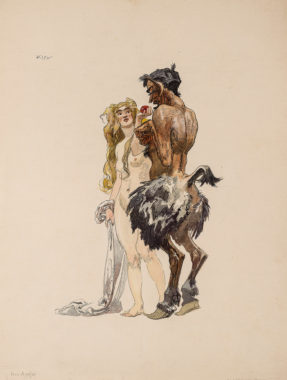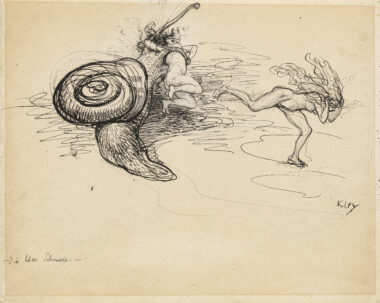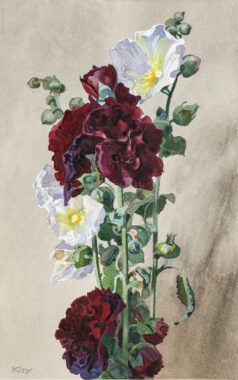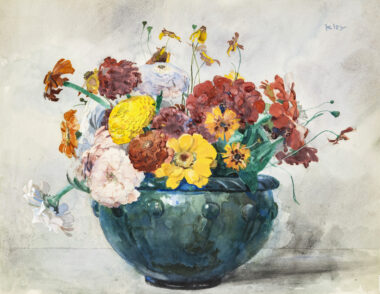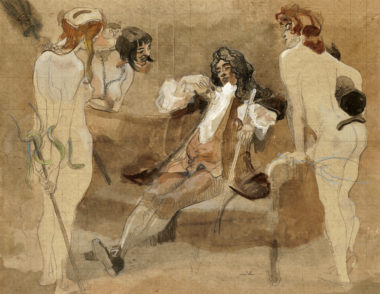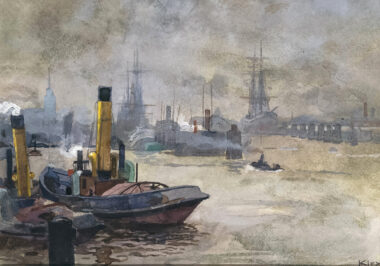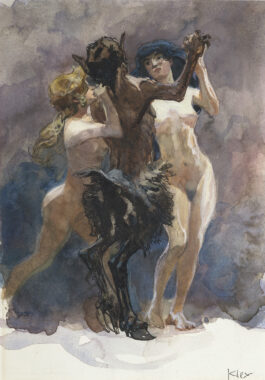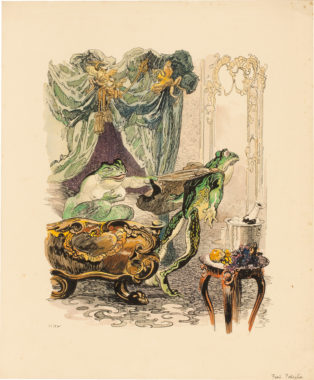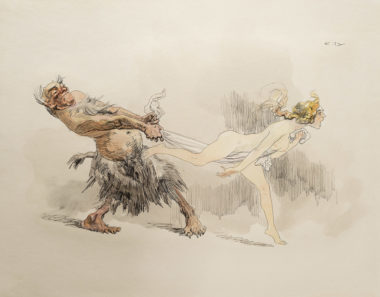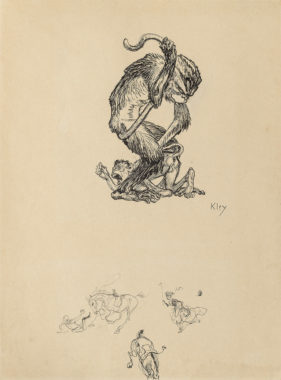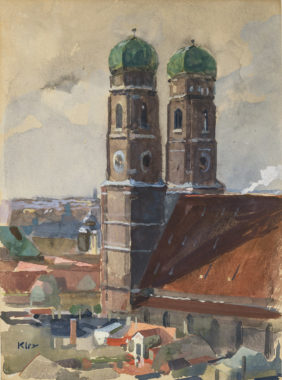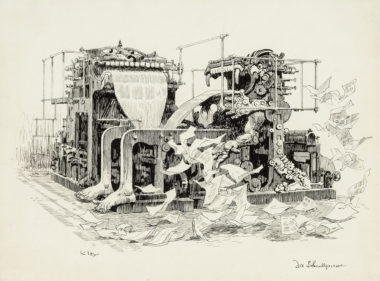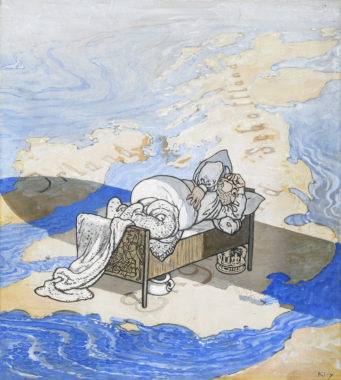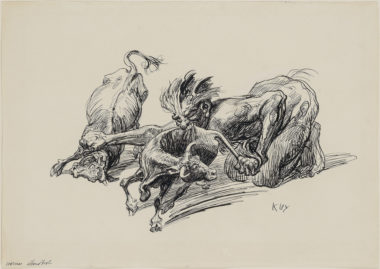Kley, Heinrich
Available Artworks
Sold Artworks
Biography
Heinrich Kley
1863 Karlsruhe – 1945 Munich
After Heinrich Kley completes his studies at the Academy of Arts in Karlsruhe in 1885, he struggles to establish himself in his hometown’s art scene. Although he manages to secure the occasional commission from local residents, offices and companies, and is active within the artist community taking part in exhibitions – greater successes prove elusive.
The tables start to turn after 1900, when the Krupp Company in Essen becomes aware of Kley’s talent for portraying topographical subjects. His precise drawing skill and keen understanding of colour allow him to capture the atmospheric moods specific to the realm of steel factories, workers’ cottages and shipyards. His life-like work, enriched with impressionist elements, soon wins over other big companies, and within a few years Kley is recognised as a first rate industrial painter – and a tremendously busy one at that.
The general public comes to know Kley through his contributions to the magazines Simplicissimus and Jugend, a line of work which moves him to relocate to Munich in 1909. Until World War I the magazines publish hundreds of his drawings, which range from humourous to satirical to downright grotesque. Social politics, technological advance, the ever complex relationships between man and woman – no matter which subject matter Kley chooses, he expresses his opinions imaginatively, with great psychological insight and distinctive virtuosity. His abilities also show in his characterisations of human behaviour through man-animal comparisons, which are equally sharp and hilarious.
After the end of World War I the artist, having been dealt blow upon harsh blow by fate, slips into oblivion. However, his drawings find a surprisingly appreciative audience in the USA. In the 1930s Walt Disney discovers Kley’s work and mines it to inspire his animated movies. Thus Kley’s art lives on in the characters of Dumbo, Fantasia and The Jungle Book and continues to delight an audience of millions.
PDF Download